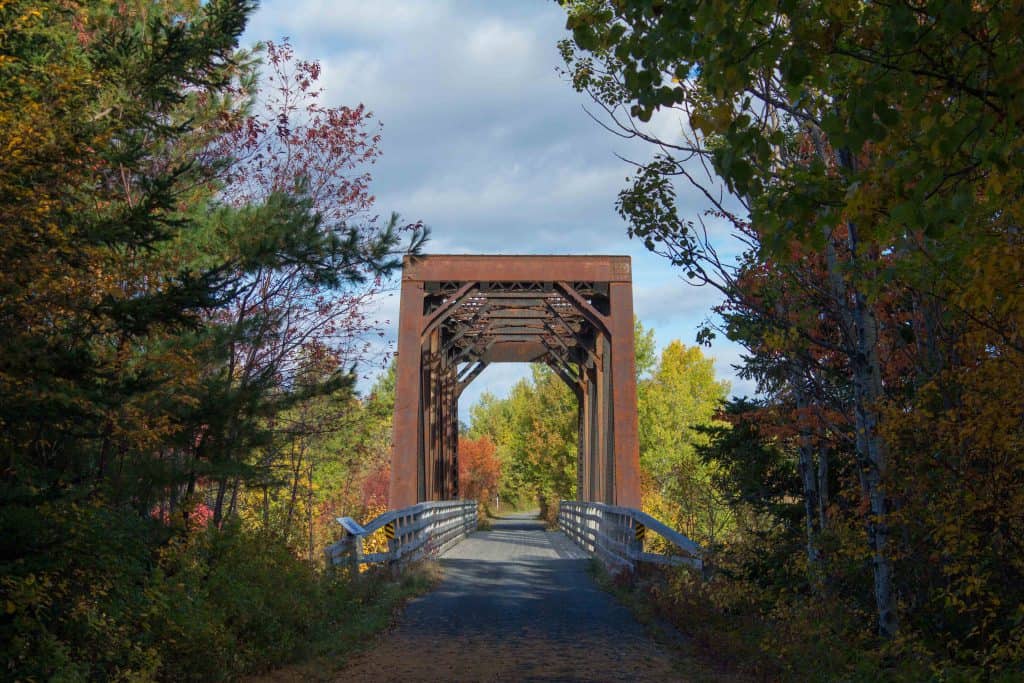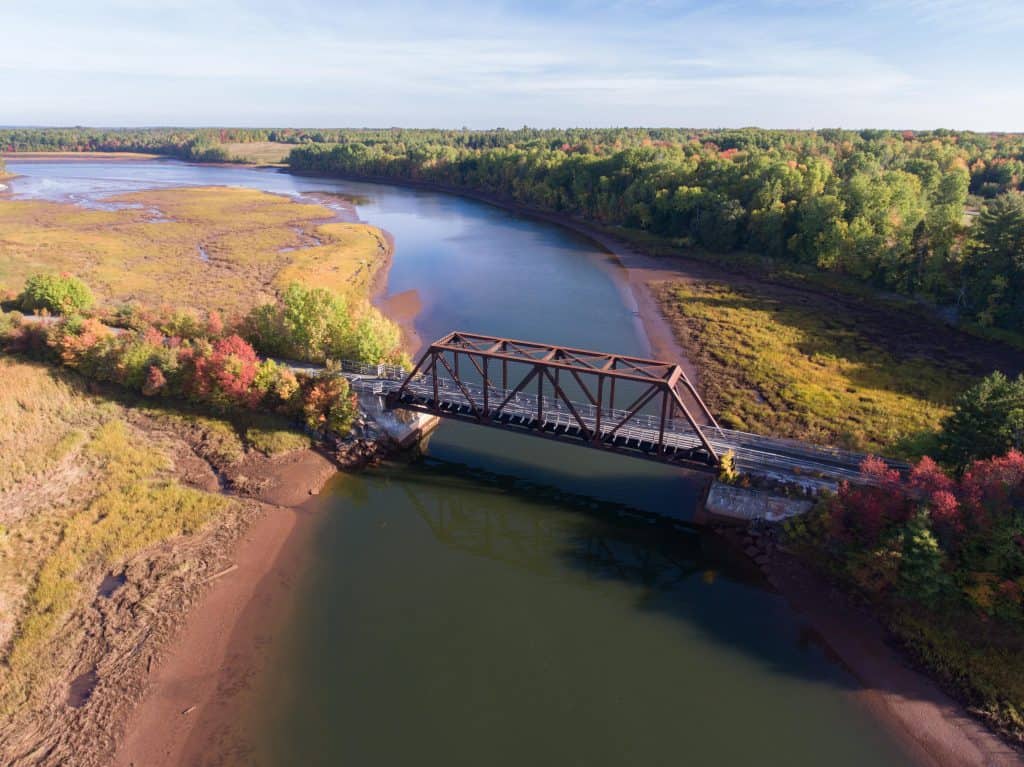Tatamagouche Area Trails Association

After the Short Line Railway from Pictou to Oxford ceased operation in 1978 and tracks were removed in the 1980s, this railbed became a popular route for the burgeoning off-highway recreation, both motorized and non-motorized. At the same time, landowners adjacent to the site were blocking some areas with fencing, and removing gravel and ballast stone. Along with a province-wide “Rails-To-Trails” movement, a group of local recreational users began meeting to address the growing number of conflicts and preserve the trail as a recreational facility and to protect their interests as users.
The Colchester Trails Association was registered in 1998, and became active in bush-cutting, repairing culverts, gravelling and grading the trail surface, activities that continue yearly to this day. The groups first major repair happened in 2007 when a major culvert failure at the Brierly Brook crossing west of Denmark resulted in the installation of a five-foot diameter culvert.
In 2008 the name of the group was changed to the Tatamagouche Area Trails Association (TATA), to better reflect the work in the northern portion of the county. TATA is registered with the Province of Nova Scotia’s Registry of Joint Stocks as a non-profit organization and is governed by its By-laws.

New volunteers, organizers, and
trail blazers are always welcome, and appreciated!
Some of the group's major projects / achievements include:
2009
The group dealt with the most expensive project to date. The repair of three badly eroded and ice-damaged piers under the French River bridge west of Tatamagouche. The first pier was repaired that year by a Dartmouth contractor, after engineering, environmental, and quote sourcing requirements had been met. With much of the preparatory work done, TATA was able to enlist a local contractor to complete the other two piers in 2010, at a lower cost than the first one.
2009
One other project the group is proud of is the construction of an access ramp near the west boundary of the business section of the village, from the trail to a disused street leading to an old decrepit wharf. The group solicited the local Highways Department to refurbish this street, cleaned up the area around the new ramp, providing additional access to the trail and bringing the area to the attention of local residents. This in turn led to the creation of the Patterson Wharf Park, by the men of Tatamagouche, during the filming of the television show “The Week the Women Went”. (Shot September 8 – 15, 2008, began airing January 2009).
2011 - 2012
Crusher dust was first used on the trail, creating a smooth and compact surface. The groups first application of the crusher dust was the Butter Trail portion of the Short Line Trail that runs along the water front in the village of Tatamagouche. The construction of the Tatamagouche Trailhead parking area near the Train Station Inn began.
2013
The Millard Creek culvert in Bayhead was repaired after the quarry stone of which it was constructed showed signs of erosion and imminent failure. The following year, 2014, a similar repair was done on the Dobson Creek culvert. These are large culverts of about three-meter diameter.
2015
The deck surface of the Waugh River bridge at the east end of the village, was replaced. Also in 2015, there was an abutment repair under the French River bridge, and repair of a washout of one side of the trail by a brook in Bayhead.
2016

Both abutments of the Waugh River bridge were repaired and reinforced.
2017
The group replaced the deck timbers of the French River Bridge and the King Street overpass at Patterson Wharf. Also in 2017, the crusher dust was extended from the Highway 6 crossing east of the village to the Sutherland Steam Mill Museum in Denmark.
2017
Official opening of the Trans Canada Trail, of which the Short Line Trail forms a vital link. It was 25 years in the making and worth celebrating. TATA celebrated the opening as did many of its partners across Nova Scotia and Canada.
2017
The Butter Trail also became a designated portion of Bicycle Nova Scotia’s Blue Route, and was used by the Tatamagouche Road Train for excursions from the village to Nelson Park.
2018
Another extension of the crusher dust surface from Denmark eastward, completed the remaining four kilometers to the Pictou County line. The group had many other major projects including the construction of a new trailhead parking area in Denmark, a new access trail from the west end of Main Street in Tatamagouche adjacent to the Balmoral Motel, and the addition of a picnic shelter to the Tatamagouche Trailhead.
2019
Crusher dust was applied to the trail in Bayhead, west of Tatamagouche.
2019
Many enhancements were made to the Tatamagouche Trailhead. Enhancements included the relocation of the storage container and the picnic shelter, organization of parking and picnic areas, and the addition of rail fencing, topsoil and trees, and a trail kiosk. The large hemlock culvert at the entrance to the trailhead was repaired after the planking failed, and it was noted that this culvert would soon have to be replaced.
2020
The summer of 2020 presented special challenges with the covid pandemic to contend with, the group continued to forge ahead. A warming shelter was built and installed at the Denmark Trailhead and three outhouses were built and installed along the trail for its users. One at each trailhead and one midway between the two trailheads, near the Upper River John Road intersection.
2020
The remaining trail was upgraded with crusher dust surfacing, and the large culvert at the Tatamagouche Trailhead was replaced with a plastic culvert.
2020
As always, the trail has been kept mowed and neat, garbage has been collected and removed, and damages from storms, flooding, wildlife, and vandals has been promptly repaired. In December, the group was dealt a serious blow with the sudden loss of our chairman and founding member, John Corlett.

